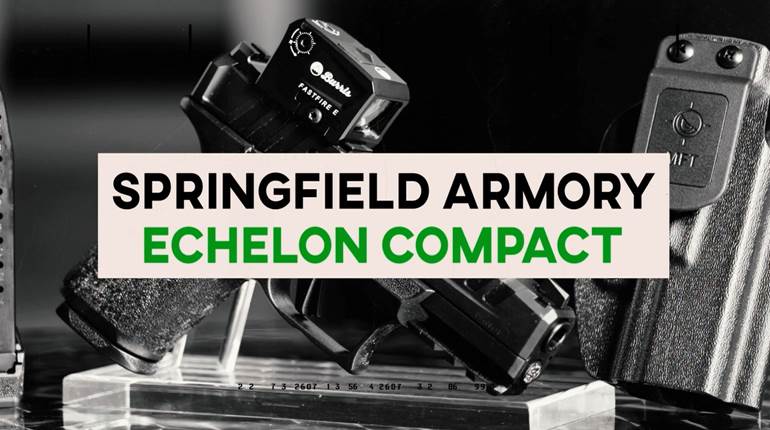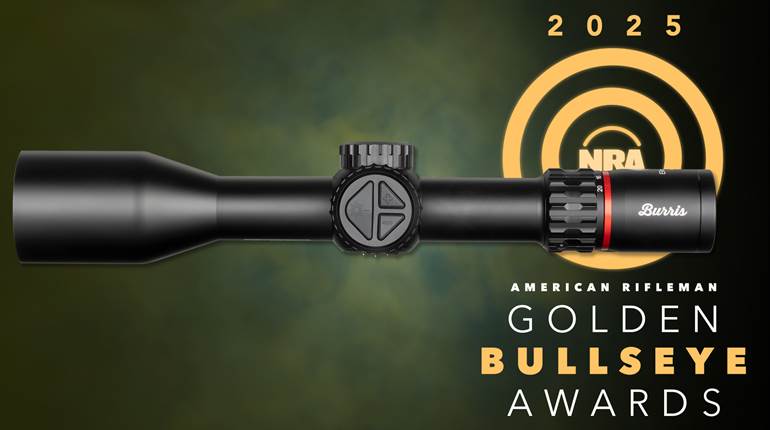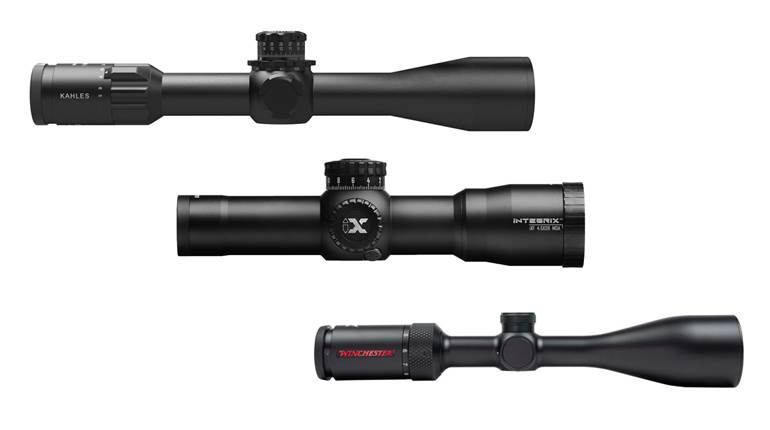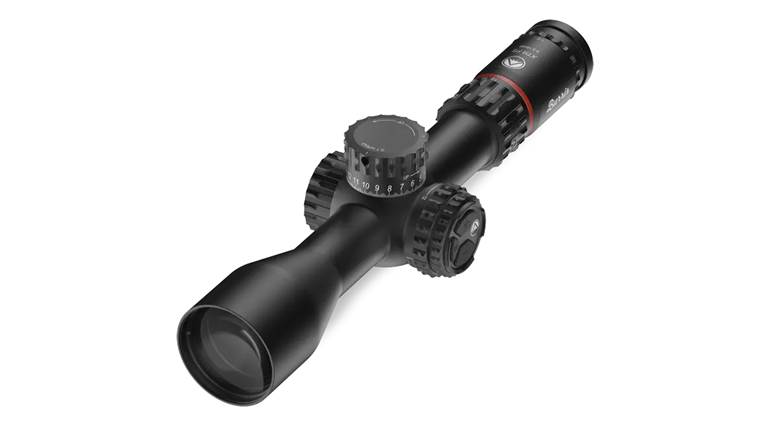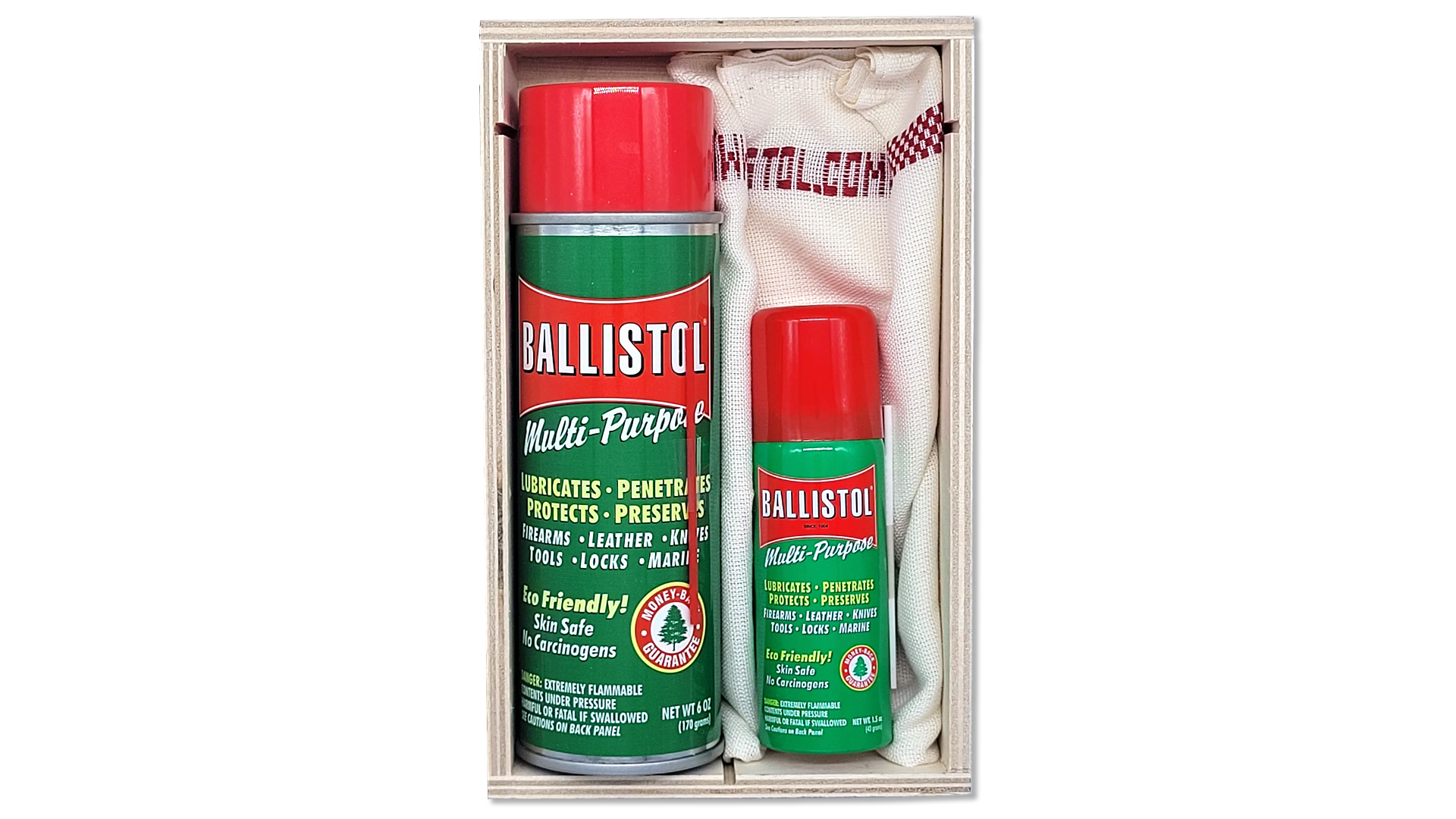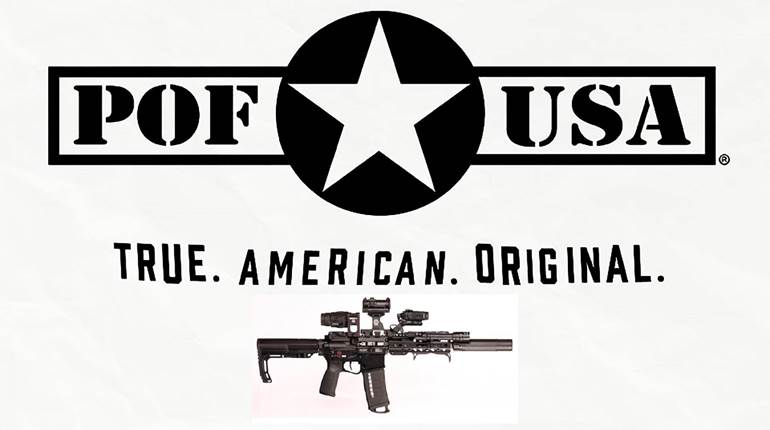
Many Burris scopes are like workers who show up every day and do their jobs very competently. They’re not oohed and aahed over like NBA basketball players, the latest hot Hollywood actor or Internet bazillionaires. They’re not German scopes that supposedly allow us to aim in the dark without electronics or the latest “in” scope for shooters who refuse to aim at anything less than half a mile away. Instead, working-class Burris scopes just get the job done.
This doesn’t mean there aren’t Burris scopes that stand out noticeably from the crowd, but among the company’s best sellers is the “affordable” Fullfield II line. These don’t have the exposed elevation turrets considered so essential by some of today’s shooters, and only the 6.5-20X model has a horizontal crosshair with mil hashmarks for holding precisely into the wind. Instead, Fullfield IIs are scopes for basic hunters, who sight-in their rifles and then don’t touch the elevation turret because they almost never shoot beyond 300 yds. Mostly they want a reliable scope that won’t eat up their kids’ college funds.
 Here it should be confessed that while some of my rifles have pretty fancy scopes, with super-lenses and precise long-range mechanics, I’ve also used plain vanilla 3-9X 40 mm Fullfield IIs extensively for hunting various animals from prairie dogs to elk. Since 2002 one has been mounted on one of my favorite varmint rifles, a Ruger No. 1B in .22 Hornet, significantly reducing the number of burrowing rodents eating the pastures of my rancher friends. The Ballistic Plex reticle makes this pretty easy out to 300 yds.—and like big-game animals, most prairie dogs are taken at less than 300. Just as pertinent, however, is the fact that the scope has never exhibited a point-of-impact shift since the day I first sighted-in the rifle.
Here it should be confessed that while some of my rifles have pretty fancy scopes, with super-lenses and precise long-range mechanics, I’ve also used plain vanilla 3-9X 40 mm Fullfield IIs extensively for hunting various animals from prairie dogs to elk. Since 2002 one has been mounted on one of my favorite varmint rifles, a Ruger No. 1B in .22 Hornet, significantly reducing the number of burrowing rodents eating the pastures of my rancher friends. The Ballistic Plex reticle makes this pretty easy out to 300 yds.—and like big-game animals, most prairie dogs are taken at less than 300. Just as pertinent, however, is the fact that the scope has never exhibited a point-of-impact shift since the day I first sighted-in the rifle.
This might not seem amazing on a 9-lb. .22 Hornet, but Fullfield II’s have also retained zero on several rifles I've used chambered for hard-kicking magnums. In fact, I trusted a 3-9X Fullfield II enough to use one to take my biggest bull elk, both in body and antler size.
Several years ago, Burris even briefly offered a 30 mm-tubed Fullfield II with an elevation turret designed to be dialed up and down—though with a screw-on cap, today considered a major faux pas by some shooters. One has served on several of my rifles, and, despite plenty of use, the clicks still work precisely and repeatedly. The 30 mm Fullfield II wasn’t produced for very long, perhaps because Burris, like some other scope companies, discovered that affordable scopes with nifty features sell better under a different name, and perhaps even price.

At the opposite end of the technological spectrum is the Burris Eliminator III, with an internal laser rangefinder and computer. Even for shooters over 50 it’s relatively easy to enter the pertinent numbers into the computer’s database, and, after sighting-in the old-fashioned way, the laser lights up one of a series of LED aiming points, while a corner of the field of view displays the drift of a 10-m.p.h. wind. Oh, and the scope automatically compensates for uphill and downhill angles, and works exactly the same way when set on any magnification.
Does the Eliminator work? Yes. I’ve used a 4-16X 50 mm model for varmint hunting out beyond 600 yds., and to ring steel targets slightly beyond the listed 1,200-yd. limit of the laser. Exactly how far the dots display the point of aim depends on the cartridge: Using the .308 Win., the limit is somewhere around 750-800 yds., but a 6.5-’06 with 140-gr. Berger VLDs was able to use the dots effectively out to 1,300 yds.

However, most longer-range shooters prefer their smart phone for computing range and windage adjustments, so I recently requested a couple of “manual” models for testing, a 30 mm-tubed 3-9X 40 mm C4 Plus with Wind MOA reticle as representative of hunting scopes, and a 34 mm-tubed 3-15X 50 mm XTR II with the SCR Mil illuminated reticle as a “tactical” model. Burris also sent along a pair of its XTR Signature rings for each scope. Like the more conventional hunting-style Signature rings, these have polymer Pos-Align inserts allowing close alignment of the scope with the bore, and also protecting the tube from “ring marks.”
The test platforms were two rifles at opposite ends of the economic spectrum: The C4 Plus was mounted on my Ruger American All-Weather in .243 Win., and the XTR II on a custom rifle by gunsmith Charlie Sisk, built on a highly modified Remington 700-footprint action in one of his aluminum STAR (Sisk Tactical Adaptable Rifle) stocks. The Sisk rifle has several barrels, but for the test I screwed on the .308 Win., a mid-weight stainless Lilja. The .243 used handloads with 105-gr. Berger Hunting VLDs, and the .308 Win. Black Hills ammunition loaded with 175-gr. Sierra MatchKings.
The traditional test for scope adjustments is shooting the square: After getting on paper at 100 yds., the adjustment turrets are clicked, up-left-down-right, and shots taken after each adjustment to produce the corners of a square. After several repetitions, the test should result in groups at each corner of the square, the size of the groups indicating the reliability of the adjustments.

It is worth noting the XTR Signature rings definitely helped when mounting the scopes in alignment with the rifles’ bores. Some shooters have expressed their doubts about that (especially those on that modern source of knowledge about everything, the Internet) because the XTR inserts are flat, rather than rounded like standard Signature inserts. But there’s a raised ridge inside each XTR ring, allowing the inserts and scope to tilt considerably. In fact, the XTR rings can be used to put enough slant on a scope to aid longer-range aiming, like a slanted mounting rail.
Shooting the square works fine when testing for a scope meant to be sighted-in and left alone, because even if the clicks don’t measure precisely as advertised (and in typical hunting scopes they often don’t), as long as the point of impact moves with each click, the scope can be zeroed relatively easily. But with scopes featuring an elevation turret designed to be run up and down, plus a horizontal crosshair with windage hashmarks, shooting the square is irrelevant. Instead, the shooter wants to know whether each click moves the point of impact precisely the correct amount, every time. Target shooters may be “dialing up” to more than 1,000 yds., while hunters may be interested in ranges up to 700 yds.—but even at “only” 700 yds., some loads require close to two feet of elevation adjustment from their 100-yd. zero.
 The most appropriate adjustment trial for modern scopes is a “tall target” test, with the scope set up squarely above the bore, and the rifle held precisely square to a plumb target. While many of us can eyeball a scope close to square by holding a bolt-action rifle at arm’s length to see whether the vertical crosshair bisects the rear of the bolt, I double-checked each scope with a Reticle-Tru Alignment Device (parabola-llc.com). It’s a deceptively simple tool, but because the Reticle-Tru directly checks the relationship between the reticle and the center of the action it’s normally more effective than devices using one or more tiny spirit levels. The targets were tacked up using the two-foot carpenter’s level kept in my overloaded range bag.
The most appropriate adjustment trial for modern scopes is a “tall target” test, with the scope set up squarely above the bore, and the rifle held precisely square to a plumb target. While many of us can eyeball a scope close to square by holding a bolt-action rifle at arm’s length to see whether the vertical crosshair bisects the rear of the bolt, I double-checked each scope with a Reticle-Tru Alignment Device (parabola-llc.com). It’s a deceptively simple tool, but because the Reticle-Tru directly checks the relationship between the reticle and the center of the action it’s normally more effective than devices using one or more tiny spirit levels. The targets were tacked up using the two-foot carpenter’s level kept in my overloaded range bag.
Before the test, I ran the elevation knobs on both Burris scopes several times, to the limits of their adjustment, to smooth any minor manufacturing burrs and distribute the lubrication. A two-foot-tall target was used, partly because that was the height of the 100-yd. target stands at the local range—where you must use the provided stands. (Some shooters would obviously want to go even taller.)
The test involved zeroing at 100 yds. as precisely as possible, then running the elevation turret to the height of the target, shooting one round, then adjusting the scope’s elevation dial and shooting other rounds at various points along the two-foot center-line. The goal is a perfectly straight vertical string of shots. The XTR II was apparently slightly more precise than the C4 Plus, but that may have been because the 13 lbs. of the Sisk rifle was easier to hold absolutely steady than the 7 lbs., 8 ozs. of the Ruger.
Despite the rules about target stands, I used that particular range because it also has a bunch of steel gongs set up at various distances out to a little more than 1,000 yds. The scopes and rifles also proved adept at ringing steel, thanks in part to ballistic coefficients for the bullets from Bryan Litz’s range-tested data, published in his book Ballistic Performance of Rifle Bullets (appliedballisticsllc.com).
Once back home, I adjusted the zero stop on the XTR II, another feature many 21st-century shooters feel absolutely necessary for long-range scopes. On the XTR this is easy: Loosen two set screws on the turret cap, push the cap down until it contacts the turret base, then turn it clockwise until it contacts the Zero Click Stop. Tighten the two set screws, and the job’s done. I’ve adjusted the zero stops on a bunch of different scopes, and the Burris system is the quickest and slickest I've encountered so far.
Like most mid-priced scopes, the C4 Plus doesn’t have a built-in zero stop, but a washer or O-ring of the right thickness can be placed under the turret cap to prevent turning the elevation a full revolution below zero. Such homemade solutions aren’t quite as handy as a firm, built-in stop, especially for shooters who may want to return to the shortest-range zero in the dark. But they work fine for most hunters, or for those who usually don’t reset their elevation dials to several hundred yards at night.
The C4 Plus is considerably less expensive than the XTR II, and only available in a very limited number of models, all with the non-illuminated Wind MOA reticle. The XTR II is available in eight models from 1-5X to 8-40X and a wide variety of illuminated reticles, all with a three-hour automatic shut-off to save battery life.
I also tested the optics of both scopes at night on a self-designed optical chart, with 10 black lines on a white background, starting with a line one inch wide at the top and ending with a 1/16" (.0625") line at the bottom, lit by a 100-watt bulb 25 yds. from the chart. Scopes are rated by the smallest black line that can be distinguished with the scope set on 6X. (Magnification also plays a definite role in perceived brightness, as does apparent color rendition—which can vary with individual eyesight.) The test is designed to determine only definition, known as sharpness to many shooters, and if the smallest line visible is particularly crisp a plus symbol is added to the number.
I’ve been using this system since 2009, and so far the dimmest scope was an old steel-tube Weaver with uncoated lenses, rating a 5. The brightest rating has been an 8, achieved by several scopes costing more than $1,000—though a number of $1,000-plus scopes haven’t tested that high. Most modern multi-coated scopes priced under $500 rate a 6, and a 7 is definitely brighter than average. Several Burris Fullfield IIs, as an example, have all rated 6 plus, as did my 4-16X Eliminator III. (One obscure fact of scope brightness, however, is that more components added to the insides of the scope dims the view. A laser rangefinder and a bunch of LED displays definitely count.) In this test the C4 Plus tested 6 plus, and the XTR II rated a 7, both very good for scopes of their type and price bracket.
Like many other Burris scopes, the C4 Plus and XTR II definitely do more than just get the job done—they earn their users’ trust.













